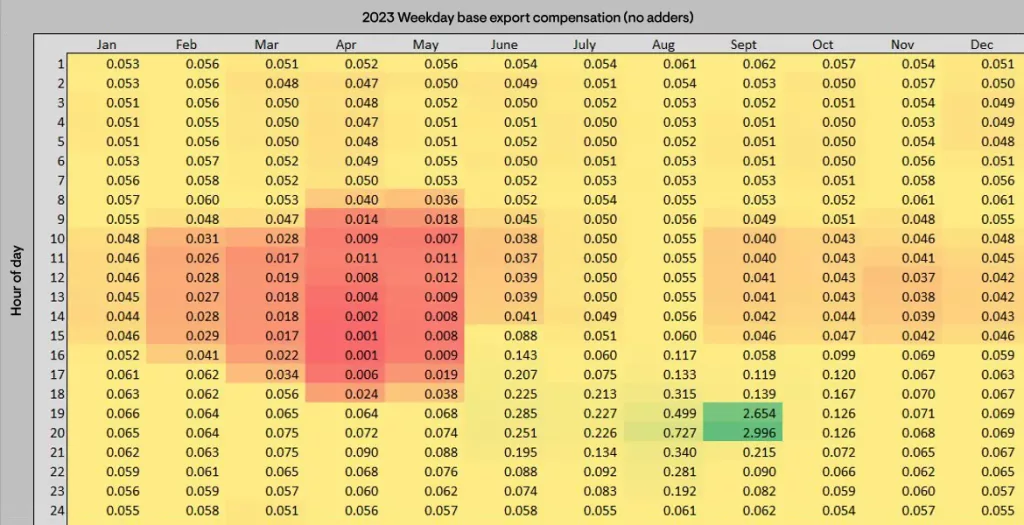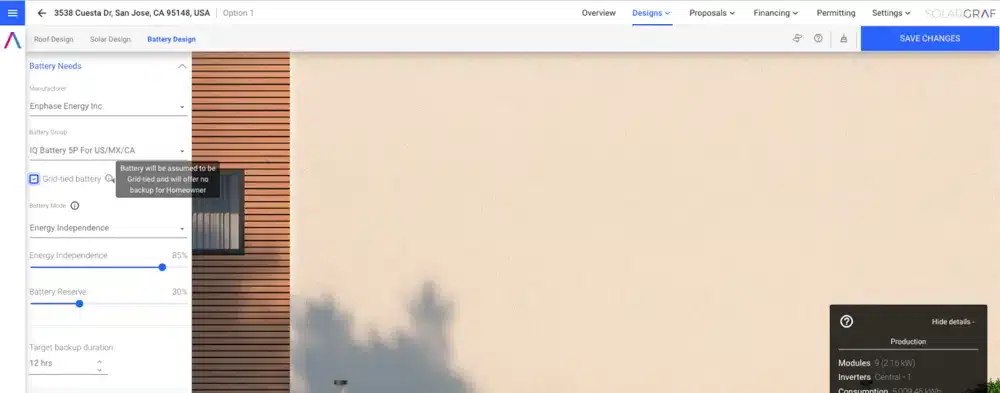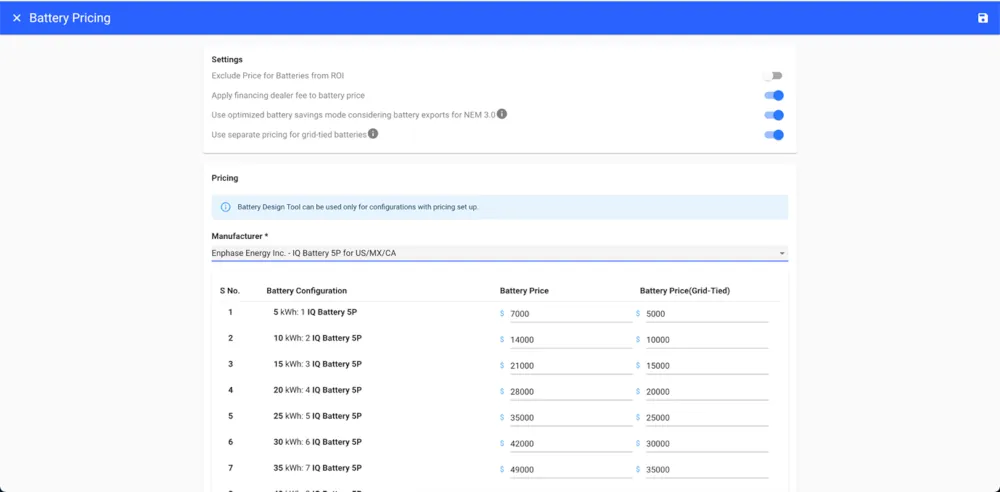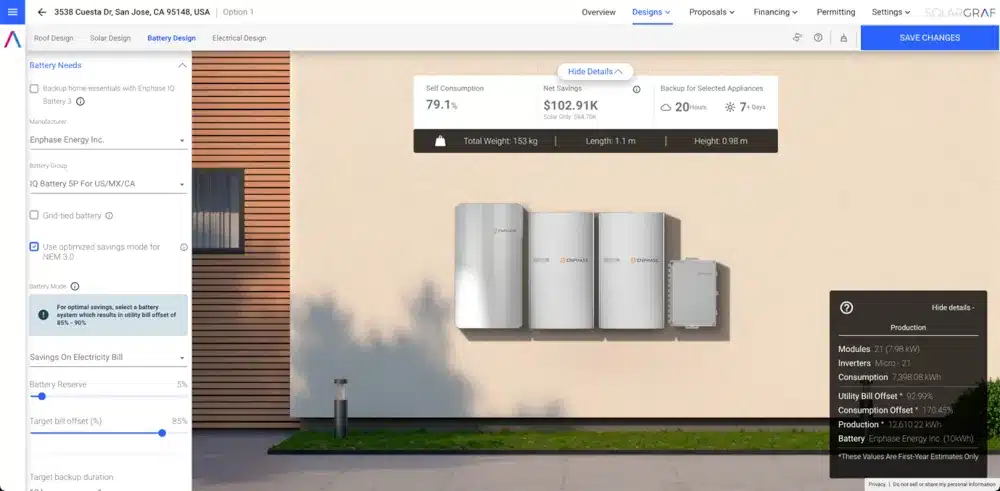1. Unveling NEM 3.0: Transforming California’s Energy Landscape
California’s new Net Billing Tariff (NBT), or Net Energy Metering (NEM) 3.0, is the successor tariff to NEM 2.0. NEM 3.0 incentivizes customers to move from installing solar-only systems to solar + battery systems. This evolution of residential solar systems from NEM 2.0 to NEM 3.0 was motivated by the need to match energy supply and demand in the grid by creating a market-driven tariff structure. Enphase has developed a comprehensive solution to improve homeowner ROI under the NEM 3.0 tariff mechanism. We will show that adding a small grid-tied battery to a solar system can significantly improve the homeowner’s utility bill offset from 55% for solar-only systems to 70%–90%, while delivering a payback period of 5 to 7 years. We will also show that this solution is easy to design, install and commission. The Solargraf platform allows installers to generate quick and easy proposals. Homeowners will still have a choice to opt for a larger solar and battery system that improves payback under NEM 3.0, and provides backup power when the grid fails. The Solargraf design tool from Enphase helps our installer partners quickly and easily design solar and battery systems to operate under NEM 3.0 tariffs. The key to this tool is the software simulation and optimization engine—the same as the software engine that is part of the Enphase Energy System. Solargraf ensures that the proposal generated for the homeowner and its financial analysis matches the system’s actual operation. This optimized proposal is possible because Enphase builds the hardware and software, and there is intimate knowledge about the hardware and software system operation.
2. Solargraf’s capabilities supporting NEM 3.0
2.1 Accurate proposals using exact 25-year CPUC rates
Solargraf offers users a wide range of NEM 3.0 tariffs from the CA utilities, which are auto-fetched and updated frequently with the tariff rate structure changes. Both commercial and residential NEM 3.0 tariffs are available.

Solargraf’s financial calculations utilize the published CPUC 25-year (until 2050) hourly sell rates (8760) and apply year-on-year fixed sell rate inflation for accurate modeling. The tool auto-applies the adder component, which is applicable for Pacific Gas & Electric (PG&E) and Southern California Edison (SCE) residential users for the first nine years of the simulation. The adder is adjusted based on low-income and non-low-income customers, providing an accurate savings simulation for low-income customers.

2.2 Optimized and improved Payback
1. Modeling export mode
Under NEM 3.0, solar systems that sell excess energy to the grid in the middle of the day are poorly compensated at nearly wholesale rates. However, selling energy during specific periods of the year, when demand on the grid is high, the compensation is also remarkably high. Homeowners with a battery will be able to capitalize on this opportunity by earning high $ credits that they can use for future bill offsets. Solargraf offers modeling of the battery in export mode, which allows discharging during the peak export rate hours, providing users with monetary export credits. The battery then operates in a self-consumption mode and prioritizes discharge when energy is needed at home, allowing total energy independence.
2. Modeling grid-tied solutions
Grid-tied storage solutions help homeowners reduce the overall cost and installation complexities while providing self-consumption benefits. Grid-tied systems typically reduce the cost of installations by almost $4K.
The Solargraf platform offers a customized, grid-tied battery storage solution in the modeling tool with a single click. Solargraf tailors the web quote to reflect the reduced grid-tied pricing and calculates the benefits of self-consumption and bill savings.

Users can perform a one-time administrative activity to customize the grid-tied and grid-agnostic pricing structure in account settings. This allows Solargraf to automatically pick the appropriate pricing for the added battery to the project. Users then save time by editing the price at the project level each time they include a grid-tied battery.

3. Setting up the annual true-up period correctly
Solargraf utility settings allow users to set the yearly true-up period. Financial simulations are adjusted according to the user’s selection for annual true-up and credit rollover calculations. The platform will help determine the best true-up month for the homeowner.
![]()
2.3 Comprehensive storage modeling with recommendations
The Solargraf platform comes with detailed storage modeling capability. Users can add a wide range of Energy Storage System (ESS) devices offered by various manufacturers. If a homeowner wants to use the storage for “Home Energy Backup,” Solargraf enables installers to model multiple home appliances to accurately size the battery for backup needs. Similarly, Solargraf can recommend a battery based on “Self-consumption” or “Savings” needs.

3. Solargraf revolutionizing California’s solar suture with NEM 3.0 solutions
The future of California’s solar industry is bright. As we move towards home electrification, the need for solar, batteries, and electric vehicle (EV) charging stations will continue to increase along with market-based utility pricing. Solargraf allows installers to model complex interactions between solar, batteries, consumption, and NEM 3.0 tariff to provide simple yet compelling proposals. The key to this tool is the software simulation and optimization engine—the same as the software engine that is part of the Enphase Energy System. This ensures that the proposal and financial analysis generated for the homeowner match the system’s operation. Solargraf provides a comprehensive solution to model a proposal that can provide a quick payback to homeowners under NEM 3.0. Solargraf provides actual CPUC rates to accurately model financials, and battery export mode to monetize peak export rates. Solargraf also models grid-tied solutions to lower costs and defines the true-up period that helps to optimize returns.


 United States
United States Germany/Austria
Germany/Austria Brazil
Brazil Netherlands
Netherlands